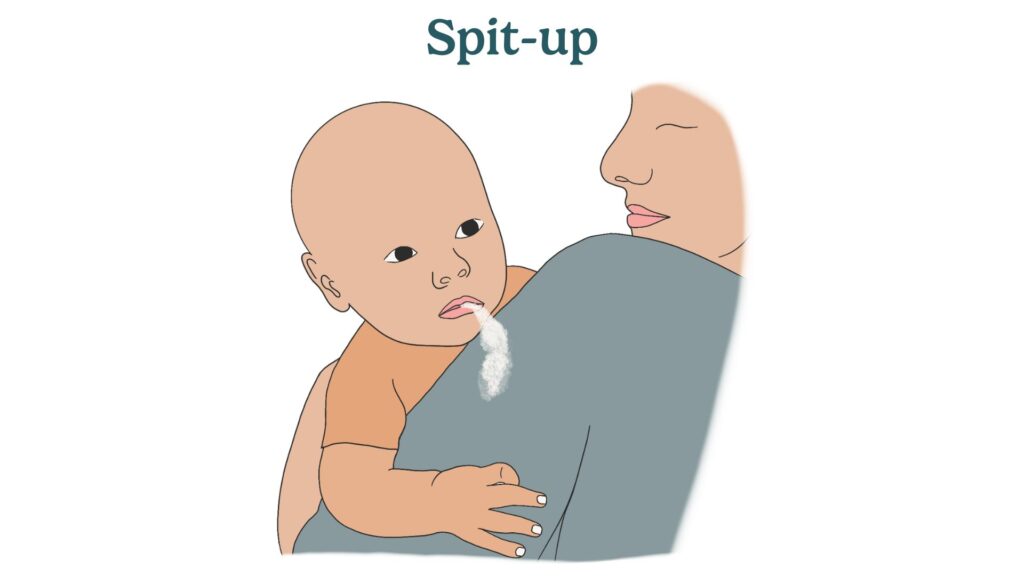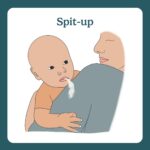spit-up

Spit-up
Spit-up is the gentle, sometimes frequent, flow of milk your baby may bring up during or after a feeding. It happens when your baby’s small stomach becomes too full or when milk backs up through their underdeveloped digestive system.
Unlike vomiting, spit-up doesn’t involve forceful muscle contractions. It’s a common and normal occurrence in newborns, especially during the early months of life, as their digestive system matures.
What to watch out for
While spit-up is usually harmless, here are some things to monitor:
- Frequency and amount: If your baby is spitting up large amounts after every feeding or seems uncomfortable, it might signal a feeding or digestive issue. Try feeding smaller amounts more frequently.
- Signs of discomfort: Arching their back, crying, or refusing to feed might indicate reflux or sensitivity to something in your diet. Discuss this with a healthcare provider if it continues.
- Weight gain: If your baby is gaining weight steadily and seems content after feedings, spit-up is likely not a concern. However, if they’re not gaining enough weight, reach out to your pediatrician.
- Projectile vomiting: This is different from spit-up and could be a sign of pyloric stenosis or another condition. Contact your pediatrician if vomiting is forceful and frequent.
Physical limitations or health circumstances
Certain conditions may make spit-up more likely or severe:
- Reflux: Gastroesophageal reflux (GER) is when milk regularly flows back into the esophagus. Most babies outgrow GER by 12 to 18 months.
- Prematurity: Premature babies may have underdeveloped digestive systems, making spit-up more common.
- Allergies or sensitivities: Sensitivities to proteins in breast milk (from mama’s diet) or formula may cause excessive spit-up.
Other terms
Some related terms that may help you better understand spit-up and feeding:
- Reflux: A condition where milk backs up into the esophagus, sometimes causing discomfort.
- Overactive let-down: A fast milk flow that can overwhelm your baby and increase spit-up.
- Feeding on demand: Feeding your baby whenever they show hunger cues, which may help reduce overfeeding.
- Burping: Gently helping your baby release swallowed air, which may reduce spit-up.
- Foremilk and hindmilk: The thinner, lower-fat milk at the beginning of a feed and the creamier, higher-fat milk that comes later. Balancing feeding time can help with digestion.
Remember, spit-up is usually a phase that gets better as your baby grows. If you have concerns, trust your instincts and check in with your pediatrician or a lactation consultant.
For more guidance, visit The Position and Latch Checklist to ensure effective feeding techniques.


